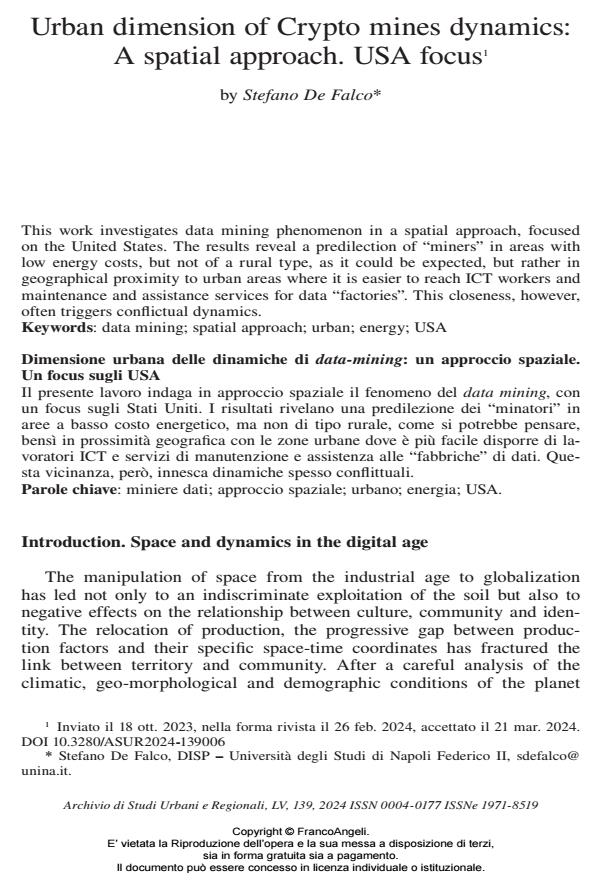Urban dimension of Crypto mines dynamics: A spatial approach. USA focus
Journal title ARCHIVIO DI STUDI URBANI E REGIONALI
Author/s Stefano De Falco
Publishing Year 2024 Issue 2024/139
Language English Pages 22 P. 115-136 File size 336 KB
DOI 10.3280/ASUR2024-139006
DOI is like a bar code for intellectual property: to have more infomation
click here
Below, you can see the article first page
If you want to buy this article in PDF format, you can do it, following the instructions to buy download credits

FrancoAngeli is member of Publishers International Linking Association, Inc (PILA), a not-for-profit association which run the CrossRef service enabling links to and from online scholarly content.
This work investigates data mining phenomenon in a spatial approach, focused on the United States. The results reveal a predilection of “miners” in areas with low energy costs, but not of a rural type, as it could be expected, but rather in geographical proximity to urban areas where it is easier to reach ICT workers and maintenance and assistance services for data “factories”. This closeness, however, often triggers conflictual dynamics.
Keywords: data mining; spatial approach; urban; energy; USA
Stefano De Falco, Urban dimension of Crypto mines dynamics: A spatial approach. USA focus in "ARCHIVIO DI STUDI URBANI E REGIONALI" 139/2024, pp 115-136, DOI: 10.3280/ASUR2024-139006